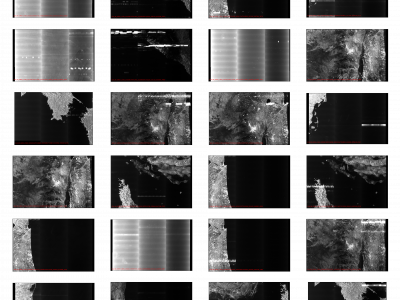Computer Vision
The ability to perceive human facial emotions is an essential feature of various multi-modal applications, especially in the intelligent human-computer interaction (HCI) area. In recent decades, considerable efforts have been put into researching automatic facial emotion recognition (FER). However, most of the existing FER methods only focus on either basic emotions such as the seven/eight categories (e.g., happiness, anger and surprise) or abstract dimensions (valence, arousal, etc.), while neglecting the fruitful nature of emotion statements.
- Categories:
 6671 Views
6671 Views
Image coordinates data of AprilTag's four edges
- Categories:
 54 Views
54 ViewsFabdepth HMI is designed for hand gesture detection for Human Machine Interaction. It contains total of 8 gestures performed by 150 different individuals. These individuals range from toddlers to senior citizens which adds diversity in this dataset. These gestures are available in 3 different formats namely resized, foreground=-background separated and depth estimated images. Additional aspect is added in terms of video format of 150 samples. Researchers may choose their combination of data modalities based on their application.
- Categories:
 276 Views
276 ViewsSolar energy production has grown significantly in recent years in the European Union (EU), accounting for 12\% of the total in 2022. The growth can be attributed to the increasing adoption of solar photovoltaic (PV) panels, which have become cost-effective and efficient means of energy production, supported by government policies and incentives. The maturity of solar technologies has also led to a decrease in the cost of solar energy, making it more competitive with other energy sources.
- Categories:
 926 Views
926 ViewsSynthetic Aperture Radar (SAR) satellite images are used increasingly more for Earth observation. While SAR images are useable in most conditions, they occasionally experience image degradation due to interfering signals from external radars, called Radio Frequency Interference (RFI). RFI affected images are often discarded in further analysis or pre-processed to remove the RFI.
- Categories:
 292 Views
292 Views
As a common dataset for change detection, its image can be divided into three parts: the image before the change, the image after the change, and the label image showing the changed area. This dataset is characterized by significant seasonal differences between bi-temporal image pairs, which makes up for some of the deficiencies in existing datasets. The labels for this dataset include some irregular changes, such as the appearance and disappearance of cars; but do not include seasonal changes, such as changes in the ground surface caused by snowfall.
- Categories:
 957 Views
957 ViewsOne of the most consequential creations in the human evolution phase is handwriting. Due to writing, today we are conveying our reflections, making business pacts, rendering an understandable world and making hitherto tasks austerer. Determining gender using offline handwriting is an applied research problem in forensics, psychology, and security applications, and with technological evolution, the need is growing. The general problem of gender detection from handwriting poses many difficulties resulting from interpersonal and intrapersonal differences.
- Categories:
 1160 Views
1160 Views
MODI script is one of the oldest written formsofmedia.Mostoftheearlywrittenknowledgeonsubjectslikemedicine, Buddhist ideology, food habits and horoscope has been written using MODI script. MODI Script was in use during Yadavas to Chhatrapati Shivaji Maharaj Era for writing administrative and government documents. Further, during Peshawas era, MODI Script was extensively used. Even during British rule, MODI Script uses are found. It started to diminish the use of MODI Script from 1960 onwards.
- Categories:
 1057 Views
1057 ViewsCAD-EdgeTune dataset is acquired using a Husarion ROSbot 2.0 and ROSbot 2.0 Pro with the collection speed set to 5 frames per second from a suburban university environment. We may split the information into subgroups for noon, dusk, and dawn in order to depict our surroundings under various lighting situations. We have assembled 17 sequences totaling 8080 frames, of which 1619 have been manually analyzed using an open-source pixel annotation program. Since nearby photographs are highly similar to one another, we decide to annotate every five images.
- Categories:
 170 Views
170 Views





